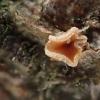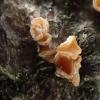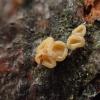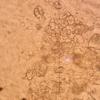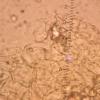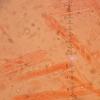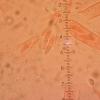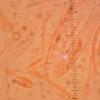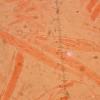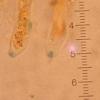
30-10-2018 18:22
 Edvin Johannesen
Edvin Johannesen
I suspect that I have Xerombrophila crystallifera,

28-10-2018 16:33
 Yannick Mourgues
Yannick Mourgues
Bonsoir. Je cherche une description récente de c

24-10-2018 19:57
 Marc Detollenaere
Marc Detollenaere
On Carpinus we found some multi-peritheciate strom

21-10-2018 20:46
 Stephen Martin Mifsud
Stephen Martin Mifsud
Hi, I wonder if this is interesting - a Xylaria

28-10-2018 09:59
En madera posiblemente de Abeto (Abis)a ver que os

28-10-2018 10:26
 Stephen Martin Mifsud
Stephen Martin Mifsud
Hi, I found this small species in Malta which I th
Xerombrophila crystallifera?
Edvin Johannesen,
30-10-2018 18:22
 I suspect that I have Xerombrophila crystallifera, collected in a previously flooded arae with deciduous trees, incl. Salix. Apothecia break through the bark in a fasciculate manner. White pruina on excipulum (crystals). Ectal excipulum (?) cells prismatic. Medullary excipulum gelatinised. Pictures are of crystals and prismatic cells in water. Asci, paraphyses and spores in Congo red. Blue ascus pore in Lugol. All photos 1000x oil imm. Scale 1 micron. Hans-Otto, you described the species (and genus). Can you confirm? I do not have your 2013 paper (would love to have it, if possible). Thanks.
I suspect that I have Xerombrophila crystallifera, collected in a previously flooded arae with deciduous trees, incl. Salix. Apothecia break through the bark in a fasciculate manner. White pruina on excipulum (crystals). Ectal excipulum (?) cells prismatic. Medullary excipulum gelatinised. Pictures are of crystals and prismatic cells in water. Asci, paraphyses and spores in Congo red. Blue ascus pore in Lugol. All photos 1000x oil imm. Scale 1 micron. Hans-Otto, you described the species (and genus). Can you confirm? I do not have your 2013 paper (would love to have it, if possible). Thanks.
Wendy Untereiner,
30-10-2018 18:39
Re : Xerombrophila crystallifera?
Dear Edvin,
As per your request.
WAU
As per your request.
WAU
Edvin Johannesen,
30-10-2018 18:47

Re : Xerombrophila crystallifera?
Thanks a lot (got it by email) :-)
Edvin Johannesen,
30-10-2018 19:14

Re : Xerombrophila crystallifera?
By the way, it was found northwest of Trondheim in Mid-Norway, so it would be a significant jump in the known distribution of the species.
Hans-Otto Baral,
30-10-2018 22:25

Re : Xerombrophila crystallifera?
Yes of course it is this species. You found it this month? Because you figured only dead elements.
I assume it was a standing dead branch? Very probably it was Salix, as always.
Indeed it is the first record from Scandinavia known to me.
Zotto
I assume it was a standing dead branch? Very probably it was Salix, as always.
Indeed it is the first record from Scandinavia known to me.
Zotto
Edvin Johannesen,
30-10-2018 22:40

Re : Xerombrophila crystallifera?
It was collected in June and sent to me a few weeks ago, so I guess you are right it is all dead. I am not so trained in judging dead or alive. Thanks for the confirmation! :-)
Hans-Otto Baral,
30-10-2018 22:43

Re : Xerombrophila crystallifera?
Is your Congo Red aqueous or other? The species survives for some time in the dry state, maybe even months, at least the spores.
Edvin Johannesen,
31-10-2018 00:14

Re : Xerombrophila crystallifera?
Yes, in water. From Micro Science.
